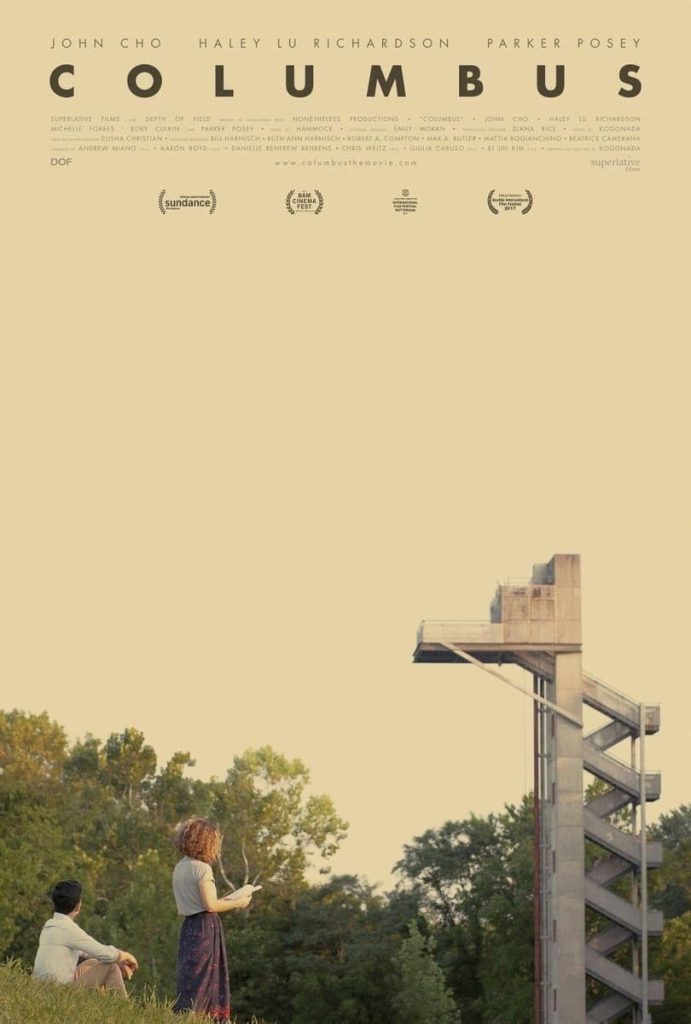
Columbus is a drama film directed by Kogonada dating from 2017. It was the debut of its director. The film features Jin who finds himself trapped in the city of Columbus, Indiana, where his father, an architecture historian, is in coma. In his journey, he meets Casey a young nineteen girl who works as a librarian but shares a very pasionated relationship with architecture. She prefers to stay trapped in this small city in order to take care of her mother, who is in recovery drug addict, instead of pursuing her dreams. The film presents the evolutive friendship of these two characters and then enounces how the vision of the other’s life perspectives would actually help them to find themselves and who they want to be in separative ways.
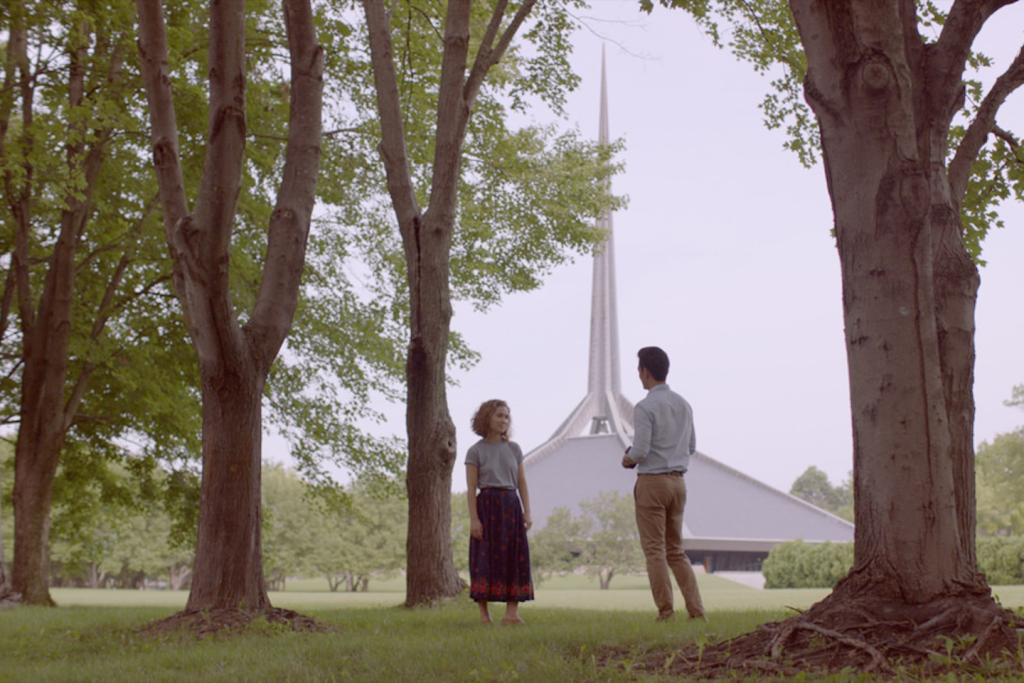
When I first saw this movie, I thought to myself architecture was in fact a character of the plot because of its essential role. First of all, the story takes place in Columbus, Indiana, a city famous for its incredible mid-century modernist architectural buildings in the United States.
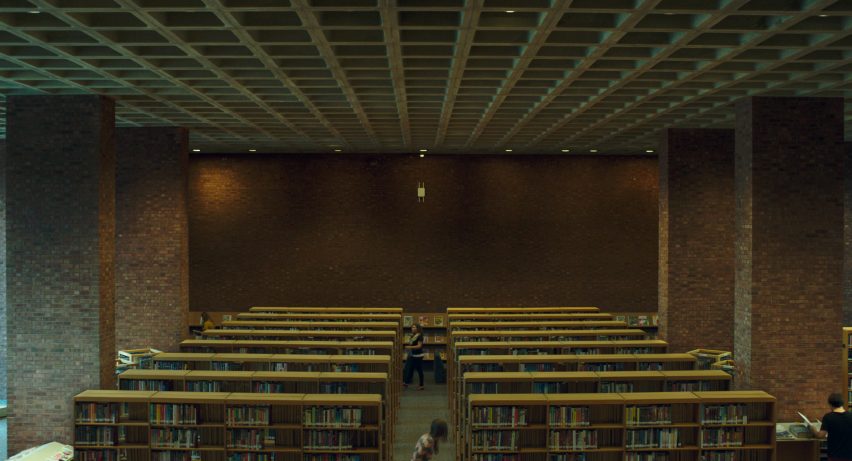
What stands out for this movie is that the buildings were never treated as just background but they were setting the tone, the emotion of the scene, always integrated in the moment they were trying to capture. In terms of filming style, the director uses static camerawork, the camera rarely moves. This leads the viewer to study the beauty of each frame and its meticulous symmetry composition.
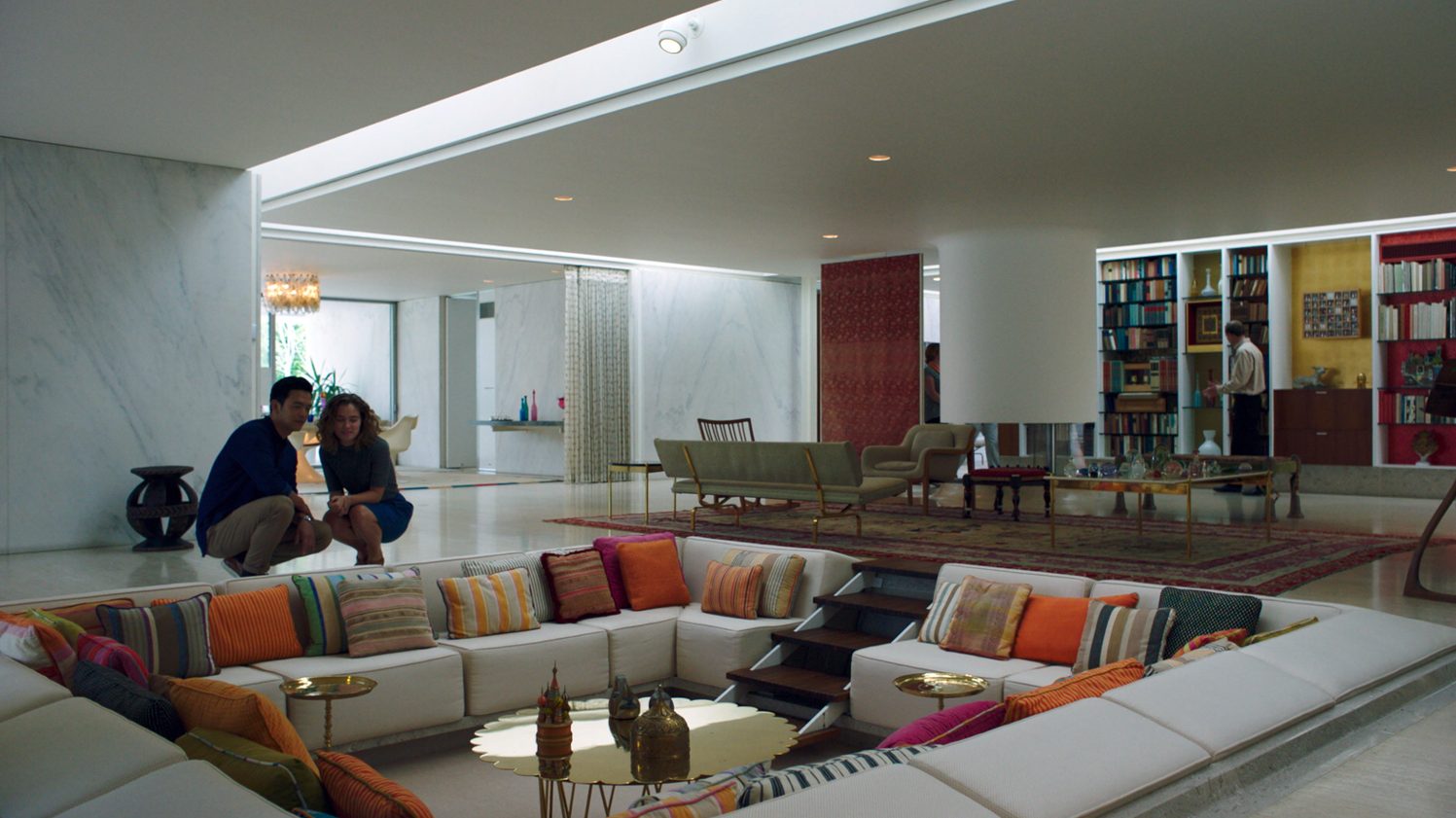
Moreover, the film reminds you that these buildings, as stunning and imposing as they are, are functional and living places in which people experience the highs and lows of their life. There is a scene where Jin opens up to Casey about his problematic relationship with architecture, due to his father’s neglect, that takes place in front of the Columbus Regional Hospital Mental Health Center, designed by James Stewart Polshek.
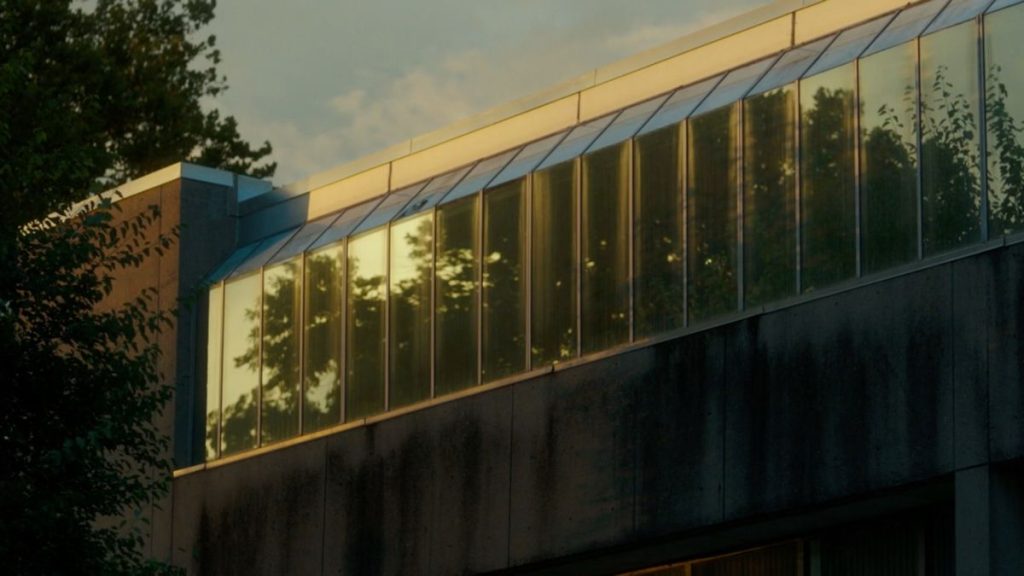
During this frame, Jin talks about Polshek’s concept of architecture as a ‘healing art’, the belief that architecture has healing and restorative abilities. For the patients inside of the hospital, the building represents a literal and metaphorical bridge to recovery. Casey agrees with the architecture healing role because it moves her but Jin doesn’t because he doesn’t connect with it as much as Casey does. However, their architecture conversations allow them all along the film to be more open with each other about their pain and resentment towards their parents, and start to make their own breakthroughs towards recovery.

Personally, I love this movie because it changed my sense of space. Typically, I leave films with my head down, deep in thought, watching one foot step in front of the other. After watching Columbus, I started noticed the details of the architecture of my city me and how the form matter in peoples lives. In my opinion, this film serves as a gentle reminder of how to slow down and take time to look closely at your surroundings. I move through the city differently. I look up and often remind myself of all the space that exists outside my own head, finding a fraction of healing in each beautifull form.
I also find this film very interesting for how the message is shared to the audience by visual spaces, scenes where the characters are alone are filmed in interior spaces but when they have an encounters we find ourselves in exterior green spaces, or how elements like a fence can represent the difference state of mind and perspective of two chararcters. The film is plenty of details that make it more unique, for example all the music of the soundtrack has for title the name of an architect.
Finally, this film moves me for its references. The measured pace of their conversations, and the film overall, is reminiscent of Sofia Coppola’s Oscar-winning “Lost in Translation”, where the city of Tokyo also appears to make the loneliness of its characters stands out in front of such a big agitated city. Furthermore, the film is also inspired by classic Japanese cinema like Yasujirō Ozu’s Tokyo Story. In fact, Ozu was one of the great modernist artists who, in the very DNA of cinema, connected the audience to a way of being, where in times of modernity he asked us how could we be modern without losing our souls? in his artworks. Therefore, in Columbus, the director shows by modern architecture the doubts of past present and future vision of space, heritage and family generational problems and questions modernity.